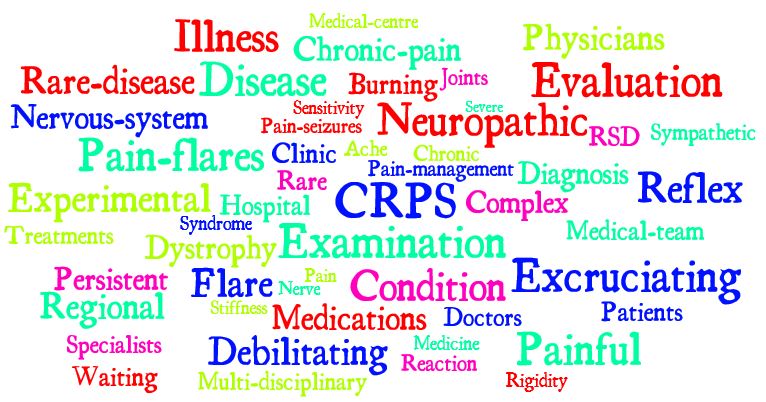While reading about rare diseases over the past few weeks, I’ve noticed that they often involve some type of pain. Some of the descriptions I’ve read are:
- acute
- burning
- chronic
- debilitating
- pathological
- persistent
- throbbing
- and many other adjectives

So I’ve wondered about the differences between types of pain. I’d already noted that there is a distinction, in medicine, between acute and chronic pain. And that rare diseases often seem to involve chronic pain.
When I asked about the difference(s) between acute and chronic pain, within various areas of the hospital at which my own rare disease is being treated, I received inconsistent replies. Sometimes the replies even seemed to contradict one another!
Some of the definitions I received were unhelpful for distinguishing between acute and chronic pain because they introduced a different term. Pathological pain:
for patients with pathological pain, the pain experience is unending, with little hope for therapeutic relief.
Pathological pain is characterized by an amplified response to normally innocuous stimuli, and an amplified response to acute pain.
Pathological pain has long been described as the result of dysfunctional neuronal activity.”(1)
So I set out to find a reliable differentiation between acute and chronic pain, by searching for information in medical journal articles. It was fairly clear to me at the outset that acute pain was short-lived, and chronic pain lasted at least a few months.
But whenever I asked someone to define chronic pain I got the impression that it was somehow a lower pain level than acute pain. My disease involves neuropathic pain, pain so intense that I vomit from it a few times a day. Sometimes I faint, from pain.
My disease is called Complex Regional Pain Syndrome (CRPS). It’s rated as being more painful than the amputation of a finger or toe – without anaesthetic. More painful than than kidney stones. So it didn’t make sense to me that, if CRPS is a chronic pain disease, its pain could be any less severe than acute pain!
Most of the medical journal articles that I read seemed to distinguish between acute and chronic pain by duration; but some said that pain is considered chronic after 3 months, others at 6 months. So I’ll go with the 6-month duration to avoid any confusion.
The most illuminating bit of information I found was this:
Acute and chronic pain are different clinical entities. Acute pain is provoked by a specific disease or injury, serves a useful biologic purpose, is associated with skeletal muscle spasm and sympathetic nervous system activation, and is self-limited.
Chronic pain, in contrast, may be considered a disease state. It is pain that outlasts the normal time of healing, if associated with a disease or injury. Chronic pain may arise from psychological states, serves no biologic purpose, and has no recognizable end-point…
The therapy of acute pain is aimed at treating the underlying cause and interrupting the nociceptive signals.
The therapy of chronic pain must rely on a multidisciplinary approach and should involve more than one therapeutic modality. (2)
This means that chronic pain is a disease in and of itself. I found that statement to be very interesting, so will try to write more about this in the future. Stay tuned!
References:
(1) Wieseler-Frank J, Maier SF, Watkins LR. Glial activation and pathological pain. Neurochem Int. 2004 Jul-Aug; 45(2-3):389-95. Web: https://www.sciencedirect.com/science/article/pii/S0197018603003012?via%3Dihub
(2) Grichni KP, Ferrante FM. The difference between acute and chronic pain. Mt Sinai J Med. 1991 May;58(3):217-20. Web:
https://www.ncbi.nlm.nih.gov/pubmed/1875958

